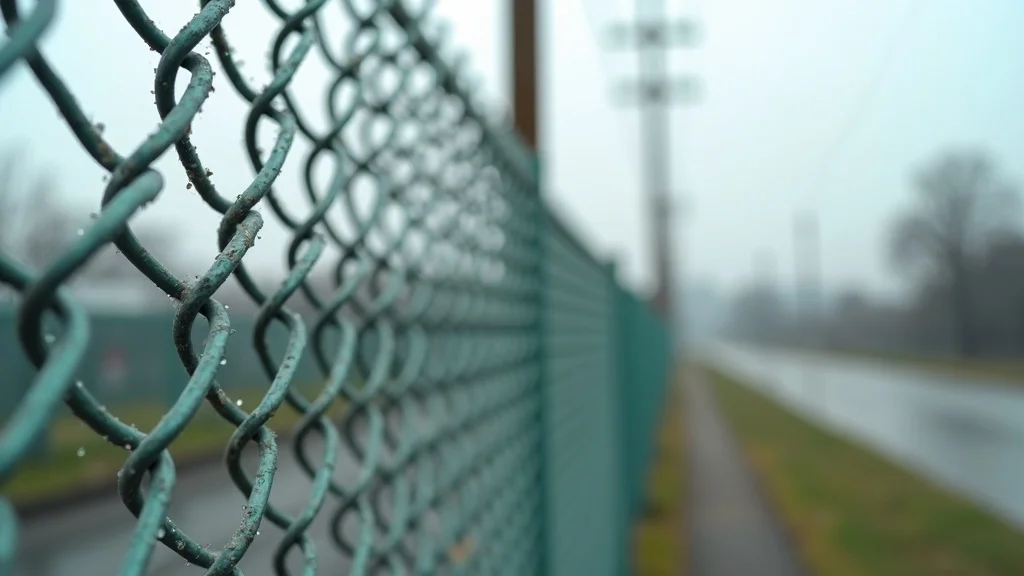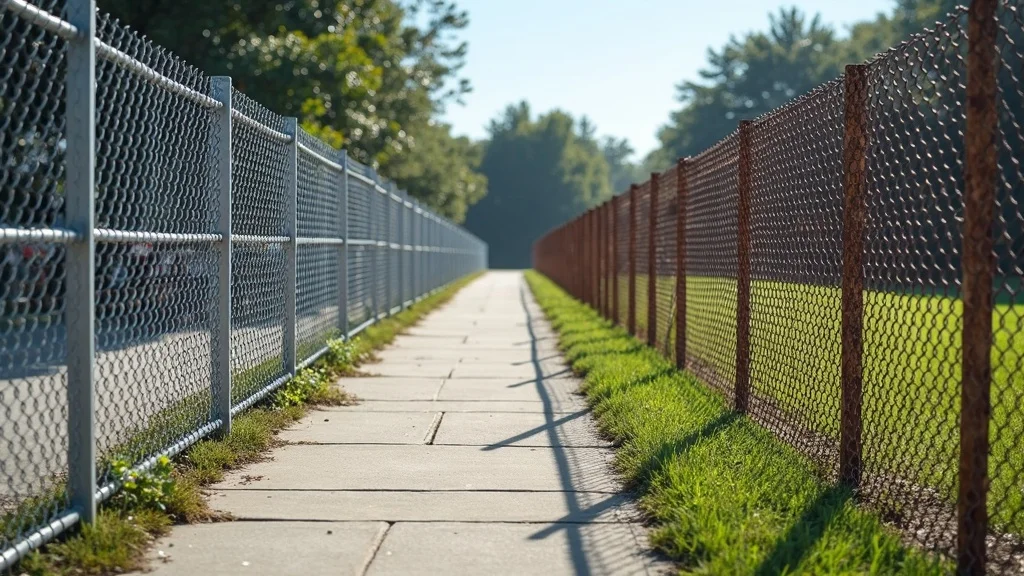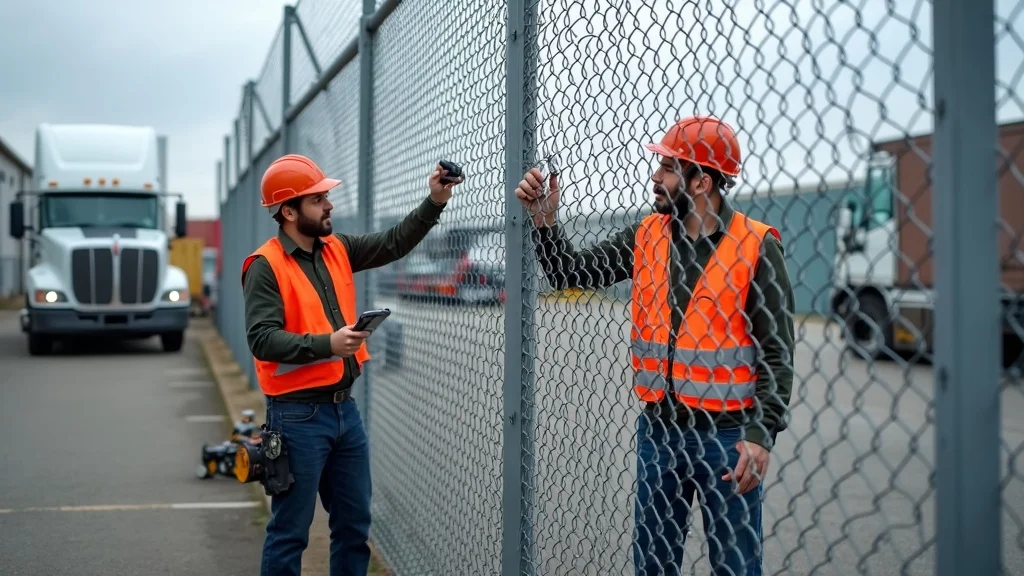
Carl Clevenger on the Critical Role of Material Quality in Chain Link Security
When it comes to protecting what matters: why quality chain link fence and gate installation still sets the standard for security and value, most property owners, managers, and contractors want assurance that their fence will secure property lines and endure over time. According to Carl Clevenger, founder and project manager at Viking Building Group, the conversation often begins with a common – and costly – misconception: price is everything. Drawing on two decades in commercial, residential, and municipal construction, Carl has seen how focusing on “cheap” can create expensive setbacks down the line. The price tag may grab attention, but it’s the unseen differences in material grade and installation method that truly determine a fence’s worth.
People make the mistake that the cheapest price on materials is the best choice.
— Carl Clevenger, Viking Building Group
Carl’s background in hands-on builds and site management exposes a truth below the surface: perimeter security isn’t a commodity purchase. “It’s important to pick a product that is going to stand the test of time and secure your property,” Carl emphasizes. In practice, that means looking beyond price-driven options to scrutinize material specs, finish, and installation quality. For buyers across Pennsylvania—from homeowners to public facilities and commercial site owners—understanding this distinction is the first step toward lasting value and real peace of mind.
Material Thickness: The Unsung Hero of Long-Term Fence Durability
According to Carl, if there’s one detail with outsize impact on chain link fence performance, it’s the thickness of the steel. In his work at Viking Building Group, he continually encounters projects where thin, low-gauge steel was used to save money upfront—only to create recurring repair costs, security vulnerabilities, and headaches for property managers. The gauge directly affects everything from how well the fence resists bending and sagging, to its ability to withstand weather, vandalism, and daily wear. “Look at the thickness of the material that you’re interested in purchasing. It’s not hard to see,” Carl advises. Just as a good foundation underpins a house, proper chain link thickness ensures every panel, post, and gate can perform its job season after season.
Look at the thickness of the material that you’re interested in purchasing. It’s not hard to see.
— Carl Clevenger, Viking Building Group
Carl’s approach also takes the long view on finishes and treatments. Modern galvanized and vinyl-coated options now prevent rust and corrosion better than ever, especially critical in areas with snow, rain, or fertilizer runoff. Viking’s crew makes it a priority to ensure every latching point, tension bar, and gate hinge uses material rated for the site’s actual conditions—not just the lowest bid.
-
Thicker steel gauge enhances structural integrity
-
Galvanized and vinyl-coated options prevent corrosion
-
Professional installation ensures proper tensioning and gate alignment

How Quality Installation Saves Money and Enhances Property Security
It’s not only the material that matters—installation quality is equally critical. As Carl notes, skilled installation transforms good material into a great fence. Mis-tensioned mesh, unaligned gates, or poorly anchored posts can all undermine a fence’s intended security. “Cheap materials with insufficient thickness compromise the entire fencing structure over time,” Carl states, reinforcing the idea that structural shortcuts lead to long-term costs.
Cheap materials with insufficient thickness compromise the entire fencing structure over time.
— Carl Clevenger, Viking Building Group
Drawing from Viking’s diverse portfolio of residential and commercial projects, Carl shares that the greatest value emerges when quality materials are paired with meticulous installation. Attention to corner bracing, proper concrete footings, and fine-tuned gate hardware keeps a property protected for years, often outlasting budget options by a factor of two or more. It’s this combination—premium material and professional expertise—that distinguishes a security investment from a temporary, high-maintenance fix.
For those interested in the practical steps that ensure a secure and lasting fence, exploring the installation process in detail can be invaluable. Viking Building Group outlines their approach to professional chain link fence installation, highlighting the techniques and standards that set their projects apart.
Common Pitfalls in Chain Link Fence Installation to Avoid
From Carl’s extensive site experience, several pitfalls consistently threaten fence longevity and effectiveness. First, using substandard, thin steel may seem like a minor specification, but it leaves the entire installation vulnerable to bending, impact damage, or even breaching. Negligence toward corrosion protection—failing to choose hot-dipped galvanized or proper vinyl coatings—leaves fences susceptible to rust, especially near landscaped areas or utilities. Finally, inadequate or misaligned gate hardware often creates points of weakness, frustrating users and reducing overall security effectiveness.
-
Using substandard, thin steel that wears down quickly
-
Neglecting corrosion protection methods
-
Inadequate gate hardware and improper alignment
According to Carl Clevenger, these are not just hypotheticals—he routinely encounters and corrects such mistakes on projects where initial installation cut corners. The cumulative effect is wasted spending: money saved in the first bid returns later as repair or replacement costs, not to mention potential liability if a breach occurs. For anyone responsible for a site, taking the time to scrutinize every link, latch, and post during installation pays dividends in reduced maintenance and heightened safety for years to come.

Real-World Insights From Viking Building Group’s Projects
Carl and the Viking Building Group team have seen firsthand how the right choices pay off. In one recent project, they were called to replace a chain link perimeter originally built with thin, non-galvanized steel on a busy commercial lot. Despite being less than five years old, the old fence had developed rust streaks, sagging sections, and faulty gates—the result of prioritizing price over proper specification. By switching to a robust steel gauge with heavy corrosion resistance and recalibrating all gate alignment points, Viking delivered a fence that immediately improved both aesthetics and site control, satisfying property managers and reducing long-term liability.

As Carl explains, attention to detail in both material selection and installation protocols is the difference between frustration and relief, especially for commercial clients with insurance or regulatory requirements. Viking’s work shows that with the right team and strategy, chain link fences and gates deliver the security and value clients expect—no matter the scale or setting.
Why Chain Link Fence Remains a Trusted Choice Across Sectors
Chain link fencing’s reputation endures for a reason: when properly installed and specified, it offers a rare blend of versatility, affordability, and effectiveness. Carl Clevenger emphasizes that Viking Building Group’s portfolio serves clients ranging from homeowners securing backyards, to commercial lots needing anti-intrusion solutions, to municipal parks and athletic facilities requiring long runs of robust, low-maintenance fencing. The system’s modular design and quick adaptability mean it can handle varied site conditions and requirements—often at a lower total cost of ownership compared to alternatives.
-
Versatility for residential, commercial, municipal applications
-
Cost-effective yet durable security solution
-
Ease of maintenance with proper installation
Perhaps most valuable, Carl notes, is chain link fencing’s straightforward maintenance profile. With professional-grade material and installation, annual checkups and minor retensioning are usually all that’s needed to keep it secure and looking sharp—a feature appreciated by contractors managing multiple properties or municipalities with tight budgets.
The Importance of Professional Expertise in Ensuring Longevity
Carl Clevenger’s extensive experience shows that the expertise of the installation crew is just as essential as the materials themselves. His team at Viking Building Group approaches every project with a sharp eye for detail: ensuring posts are set to the correct depth, mesh is tensioned precisely, and gates swing true for years of use. These best practices, rooted in discipline and craftsmanship, are what make the difference between a fence that needs frequent repairs and one that remains a set-and-forget solution.

According to Carl, the value of experience translates to real long-term savings: “Shortcuts may save a little on day one, but they always cost more in the long run.” Expert installation has a compounding effect, preventing issues before they start and giving clients true confidence in their property’s perimeter security.
Wrapping Up: Protecting Your Property with the Right Chain Link Fence and Gate
In today’s market, protecting what matters: why quality chain link fence and gate installation still sets the standard for security and value takes both smart material choices and the right installation partner. Carl Clevenger’s leadership at Viking Building Group—backed by real-world results across Pennsylvania—shows that initial investment in quality pays off through lower future repairs and superior day-to-day peace of mind.
-
Invest in quality materials focusing on thickness and corrosion resistance
-
Hire skilled installers to guarantee structure integrity and proper gate function
-
Understand that initial cost savings via cheap materials can lead to greater long-term expenses
Choosing a durable and effective product is key to long term property security.
— Carl Clevenger, Viking Building Group
If you’re evaluating your options for chain link fencing or gates—whether it’s a backyard, ballfield, or business lot—the clear message from industry leaders like Viking Building Group is to prioritize quality at every step. The right decision brings a fence that looks great, stands strong, and truly protects what matters most.
Take the Next Step Toward Secure Perimeter Solutions
Ready to secure your property with a high-quality chain link fence or gate? Reach out to Viking Building Group for a free consultation on your project—experience the difference expert installation and superior materials make.
For property owners and managers seeking to elevate their security strategy, understanding the broader range of solutions available is essential. Viking Building Group offers insights not only into chain link fencing, but also into comprehensive perimeter protection and site improvement services. Discover how their expertise can help you achieve lasting value and peace of mind by visiting their main services page—and take the next step toward a safer, more resilient property.


